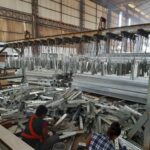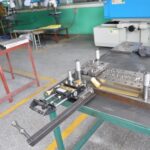The Invisible Enemy: Understanding Corrosion
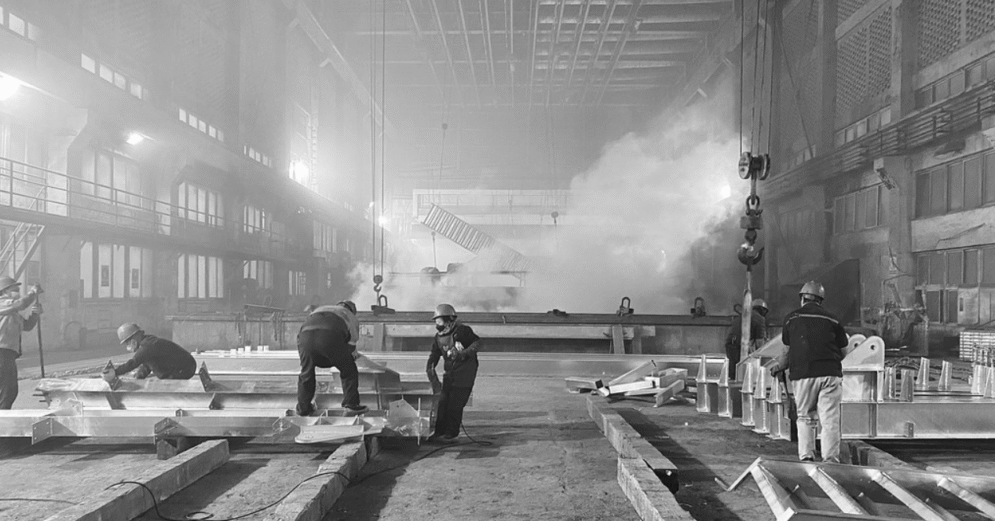
Corrosion is one of the major challenges affecting steel fabrication because it gradually weakens the structures without being easily noticed. Hot dip galvanizing rises up as the defense. In a very precise manner, steel is surrounded with layers of sacrificial zinc which is resistant to the destructive power of moisture and oxygen. This method contributes to the durability of structures because galvanized steel structures can last over 70 years, a testament to the effectiveness of hot dip galvanizing in metal fabrication. This technique is used by structural steel fabricators globally because of the unmatched capability of hot dip galvanized steel to offer protection against corrosion, thereby ensuring longevity of the structures fabricated.
Know the chemistry and metallurgy behind Hot dip galvanizing: Zinc to the rescue
In the field of corrosion protection, zinc has been found to be the hidden gem that plays the role of sacrificial protection to the steel structures. Hot dip galvanizing is a process through which steel parts are transformed metallurgically and coated with a durable layers of zinc alloy. This sacrificial coating protects the base steel from rusting and guarantees the durability of the latter in extreme conditions. Both metal fabricators and structural steel fabricators understand the importance of zinc in the protection of the structures they produce, heralding hot dip galvanizing as the ultimate form of corrosion protection in metal fabrication.
The Hot Dip Galvanizing Process: A Comprehensive Overview
Hot dip galvanizing leads to a highly effective, multi-layered, and thicker protective layering ranging from 3 to 9 mils in thickness, much thicker than most corrosion protection standards. Global structural steel fabricators and metal fabricators use this process as they acknowledge the efficiency of the process in protecting their work from the constant attack of corrosion.
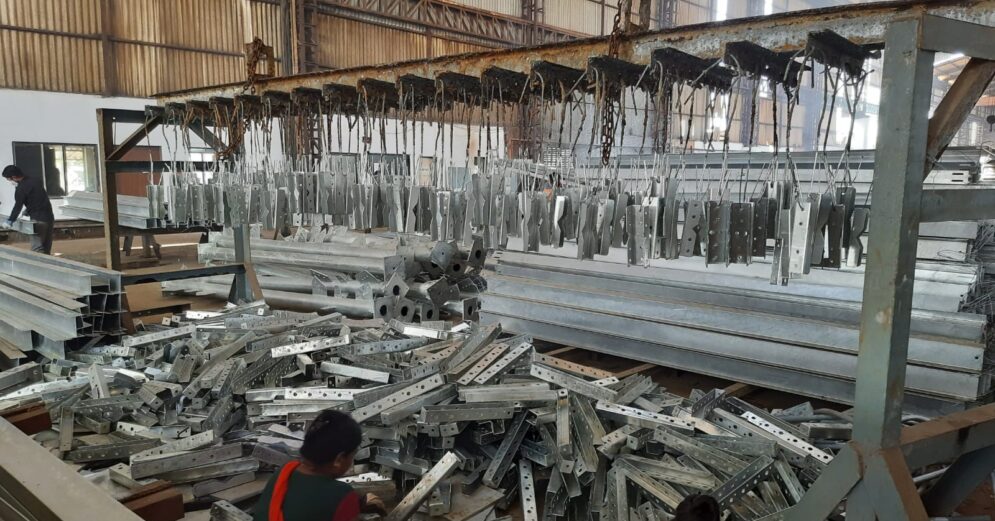
Hot dip galvanizing is a meticulous process involving several key stages, ensuring the formation of a robust zinc coating on steel surfaces.
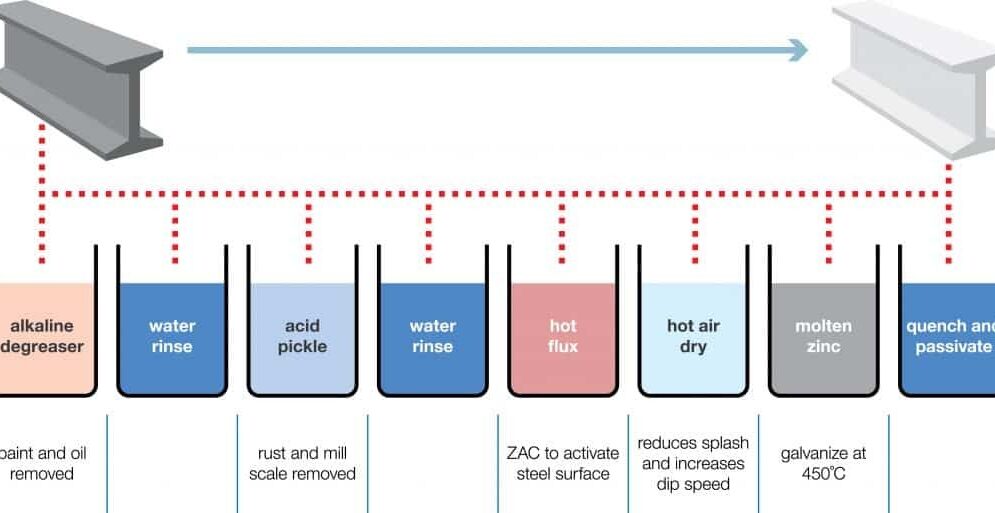
Stage 1: Surface Preparation
The process begins with thorough surface cleaning, typically alkaline degreasing followed by acid pickling or solvent cleaning to achieve optimal surface cleanliness. This removes contaminants like dirt, grease, and oxides, promoting adhesion between the steel and zinc coating.
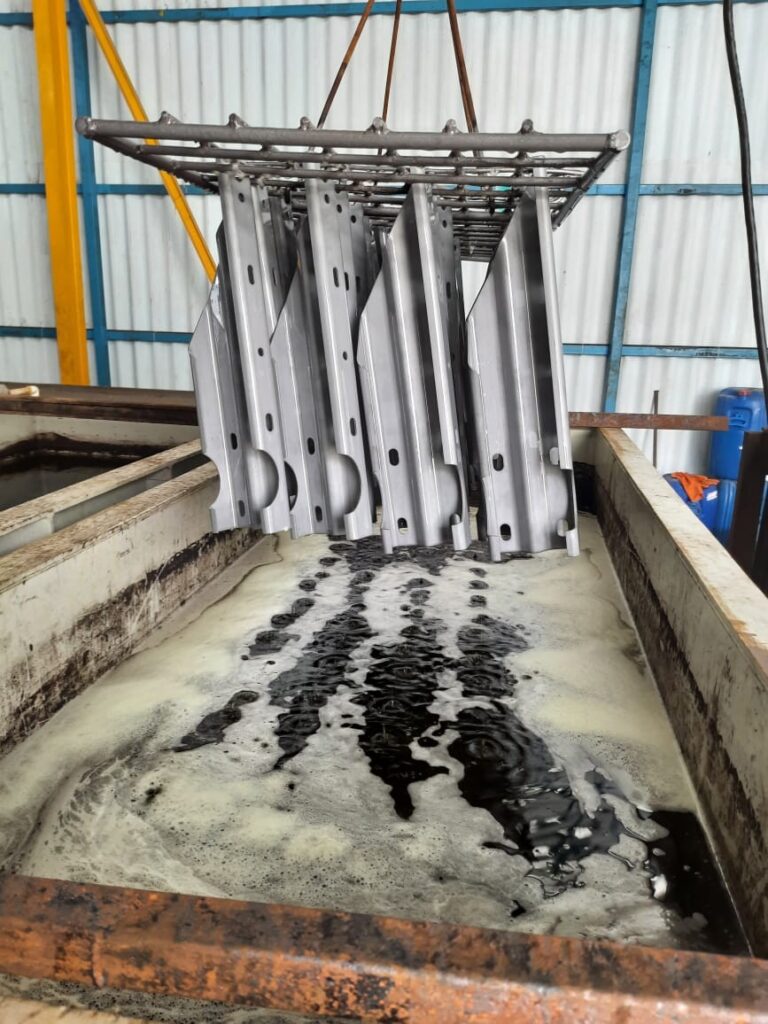
Stage 2: Fluxing
Steel is immersed in a flux solution to further cleanse the surface and facilitate uniform zinc coating formation.
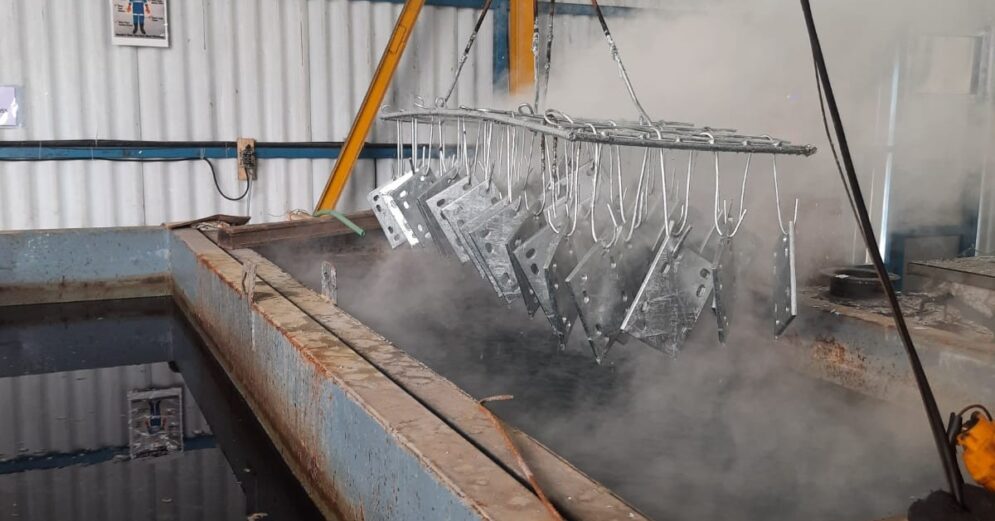
Stage 3: Galvanizing
Pre-heated steel is dipped into a molten zinc bath at around 450°C, where a metallurgical reaction forms zinc-iron alloy layers constituting the galvanized coating.
Stage 4: Quenching
The coated steel is rapidly cooled in a quench tank, halting the galvanizing process and stabilizing the zinc coating.
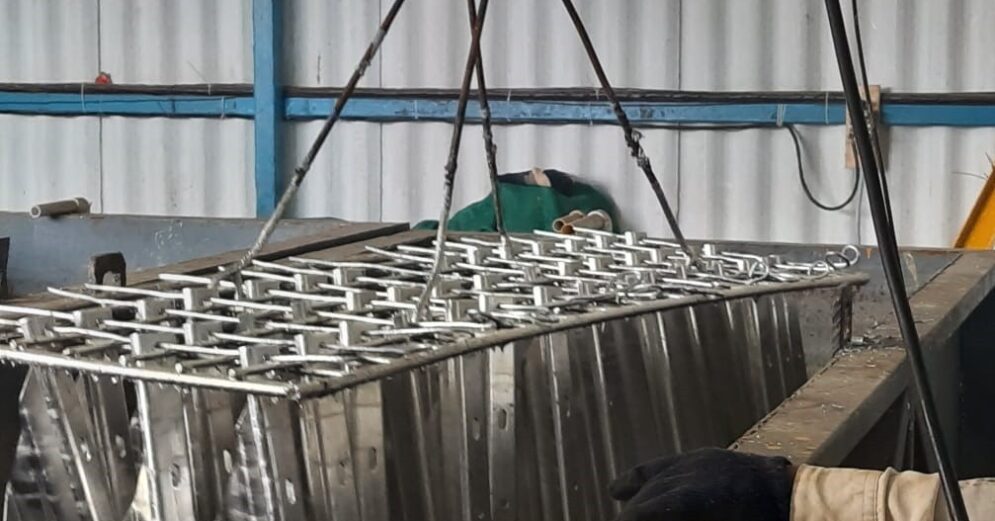
Stage 5: Post-Treatment
Post-treatment may include chromating to enhance corrosion resistance and provide a decorative finish, ensuring lasting performance.
The Hot Dip Galvanizing Showdown: Why It Is Still the Best
When it comes to corrosion protection, there is no other technique as effective, efficient and reliable as hot dip galvanizing. Hot dip galvanizing is different from other coating systems like paint or spray-on systems; it provides excellent protection with coating thickness varying from 3. 9 to 9. 0 mils, which provides a very strong anti-corrosive protection. The metallurgical bond created between zinc and steel also adds to this as structures made from galvanized steel have a life span of more than seven decades. This unmatched corrosion protection has made hot dip galvanizing as the most preferred method for metal fabricators and structural steel fabricators around the globe marking a new era of corrosion protection in metal fabrication.
Thicker Coatings, Improved Protection
When it comes to the protection of steel fabrication structures against corrosion, the thickness of the protective coating takes on a central position. While other coatings provide a very thin layer of protection, hot dip galvanizing offers a thick layer of protection where the thickness of the coating can range from 3. 9 to 9. 0 mils which is above the industry average. This strong barrier protects steel from the damaging action of moisture and oxygen, making it to be long-lasting and strong. Both metal fabricators and steel fabricators appreciate the importance of this thick and strong layer to maintain the quality and performance of the products and therefore, hot dip galvanizing is considered as the foundation of corrosion protection in metal fabrication.
The Metallurgical Magic of Bonding Like No Other
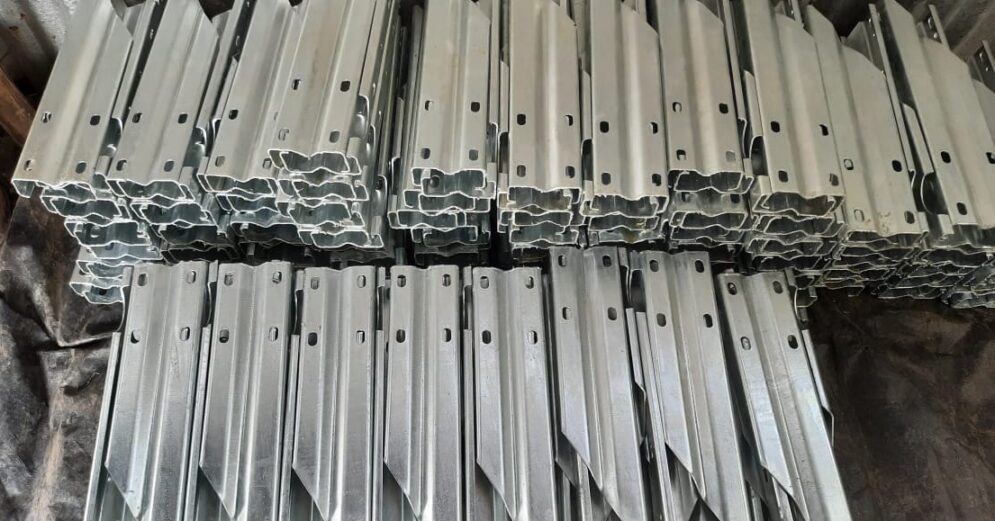
The reason why hot dip galvanizing is so effective cannot be overemphasized, this is due to the metallurgical bond between zinc and steel. Contrary to other coatings that rely on adhesion to the substrate, hot dip galvanizing develops a strong metallurgical bond between zinc and the steel. This metallurgical union provides for best-in-class corrosion protection to metal fabricators, metal works & structural steel fabricators
ASTM, ISO and More : Decoding the Alphabet Soup
The field of hot dip galvanizing is replete with an assortment of standards and certifications that are denoted by letters and numbers. ASTM (American Society for Testing and Materials) and ISO (International Organization for Standardization) are two most important organizations that set standards for hot dip galvanized steel . ASTM standards like ASTM A123 for hot dip galvanizing and ASTM A153 for zinc coating explain that the products must undergo certain tests and have to meet certain standards to qualify as good quality hot dip galvanized steel . Similarly, there are ISO standards such as the ISO 1461 for general requirements for hot dip galvanized steel which offer a guideline on the international standards of hot dip galvanizing.
Trust the Stamp: Understanding Quality Certifications
Certifications on the other hand provide physical evidence that the hot dip galvanizing has been done to the recommended standards and quality. The (AGA) Certification Program of the American Galvanizers Association is a recognized accreditation that confirms compliance with strict quality assurance standards in galvanizing processes. Also, third-party certifications from accredited inspection agencies are available to affirm that the hot dip galvanized steel meets the set regulatory standards and performance standards. Consumers of Metal fabricators and structural steel fabricators can therefore rely on these certifications knowing fully well that the product is of high quality and more reliable for their projects.




